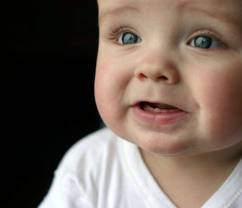Teething occurs in babies when the baby teeth begin to emerge from the gums. This causes the baby’s gums to get irritated and inflamed. Teething occurs during the age of 6 months to 2 years.
If your child is experiencing teething he or she may show signs of teething such as an increased desire to chew on objects, tenderness of the gums, swelling and excessive drooling. Many people believe that fever counts as a sign of teething, however, studies have proven that the chances of a teething child to have fever is the same as that for a child who is not teething.
If you take your child to the doctor or dentist, he may prescribe teething gel, following a soft food or fluid diet and non-steroidal anti-inflammatory medication such as acetaminophen.
Disclaimer: this post on first aid for teething pain is for learning purposes only. To learn about allergic reactions, swelling, infection in children and fever’s enrol in first aid and CPR classes.
Signs and symptoms of teething
If your child is teething, he or she may show signs and symptoms such as:
- Increased need to chew on objects
- Excessive salivation
- Excessive drooling
- Mild gum redness
- Mild gum pain
- Mild gum swelling and tenderness
If your child has a fever, it does not mean that he or she maybe teething. The chances of a teething child and a non-teething child having fever are the same, contrary to popular belief.
How will a doctor treat teething?
For teething, specific treatment includes:
- Eating soft foods
- Wet, chilled washcloth
- Chilled teething ring
- Nonsteroidal anti-inflammatory drugs for pain
Home treatment
It is true that seeing your child having teething can be a tough job, however, following a few home treatment steps will help abate some of the symptoms of teething.
See your health care provider if:
- Your child has a fever of 101 F or higher
- Teething is accompanied with other unusual symptoms such as behavioral changes (irritability) or physical changes such as diarrhea or fever
- You want to give your child an oral pain reliever or any other medicinal/over-the-counter treatment that you have never used before. Only give medication under your doctor’s consent
Follow home care steps to make your child feel better while teething:
1. Offer something your child can chew on
- Give your child a firm rubber teether. Avoid giving freezable teethers or teethers with liquid
- A teether should never be given around an infant’s neck as it may risk to choking
2. Relieve discomfort
- Soothe your child’s gums by gently massaging them with a clean finger or cool washcloth
- Give soft foods if your child is consuming solid foods such as yoghurt or applesauce
- Avoid giving hard food
- Feed your baby some cool water filled in a bottle. Do not give your baby too much water if he is younger than 1 year old as it may damage his kidneys
3. Administer pain medication under your pediatrician’s consent
- You may use a baby-formula acetaminophen to reduce gum pain
- Administer pain-relieving gels for the gums. Avoid using too much ointment on the gums
- The FDA discourages using medication containing benzocaine for children under the age of 2
4. Additional steps
- Keep a cloth or napkin with you at all times to wipe your child’s drool from his skin to prevent rashes
Warning signs
See your doctor immediately if:
- Your child has a fever above 100.4 degrees F (38 C) and is 3 months or younger
- Your child has a fever of 101 degrees F (38.3 C) if your child is older than 3 months
- Your child is vomiting
- Your child is suffering from worsening mouth, tongue or gum swelling
- You notice drainage of pus from your child’s gums
- You feel swollen, tender gland’s in your child’s neck
Learn More
To learn more about teething pain and severe medical emergencies sign up for first aid and CPR training with credible St Mark James providers.
